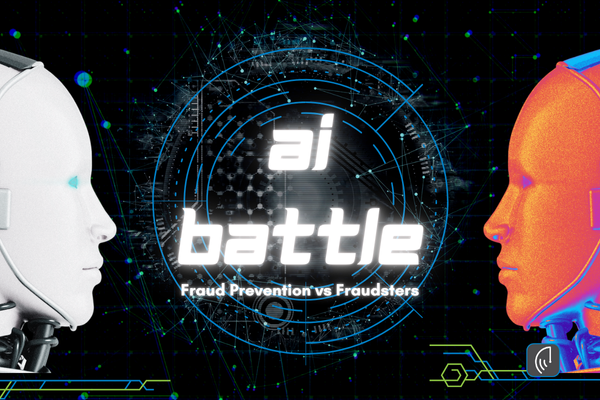Artificial intelligence (AI) is changing how companies and people protect themselves from fraud. AI helps find and stop fraud while also giving criminals new ways to trick people. This article explains both sides of AI in fraud prevention in clear, simple language.
How AI Helps Criminals Commit Fraud
Deepfakes and Fake Identities
AI can create deepfakes, which are very realistic videos, audio clips, and images that look real but are fake. Criminals use deepfakes to create fake identities.
Example: A fake video of a company leader might trick a business into sending money to a criminal.
Here is a fun example (note – this was done 3 years ago, consider how much better and accessible AI is today!): Tobey Maguire instead of Tom Holland in Spider-Man
AI-Driven Scams
Criminals use AI to create smart scams. They design phishing emails and phone calls that sound very real. These scams make it easier to steal money or personal information.
Important Numbers
- The FBI’s Internet Crime Complaint Center (IC3) said AI-assisted phishing scams increased by 35% in 2022. (Source: FBI IC3, 2022 – visit ic3.gov for more information.)
- Cybersecurity Ventures (2023) predicts that losses from AI-enhanced fraud could reach $20 billion by 2025.
How AI Helps Stop Fraud
Smart Computer Programs
Machine learning fraud detection systems use AI to study large amounts of data. They look for patterns that seem odd and can quickly spot fraud. This helps stop fraud before it causes big problems.
Watching for Strange Activity
AI tools can monitor transactions and user actions in real-time. They check every move and alert someone if something seems wrong. This fast response helps prevent more fraud.
Success Stories
- A 2021 report by IBM Security found that companies using AI fraud detection systems reduced fraud losses by 25% in one year. (Source: IBM Security, 2021 – visit ibm.com/security for details.)
- Some big banks have seen a 30% drop in fraud after using AI systems. (Source: McKinsey & Company, 2022 – learn more at mckinsey.com.)
Working With Other Technologies
Using AI with other tools like blockchain and behavior analysis makes fraud prevention even stronger. This mix helps companies protect customers and build trust.
The Ongoing Battle: Fraudsters vs. Fraud Detectors
Fighting Back with AI
As AI improves, criminals also get better at using it. They find new ways to beat security systems. This means the people who build AI tools must keep updating them to stop these tricks.
More Money for AI Research
Companies and governments are spending more money to improve AI for security. Working together, they hope to stay ahead of criminals who use AI for fraud.
Ethics, Laws, and Rules in AI Fraud Prevention
Balancing Safety and Privacy
While AI in fraud prevention has many benefits, it also raises questions about privacy. Companies must use AI carefully so that it does not invade people’s personal lives. Using AI safely and respectfully is very important.
Current Rules and Future Changes
Laws like the General Data Protection Regulation (GDPR) in Europe and the California Consumer Privacy Act (CCPA) in the United States help protect personal data. As AI changes, lawmakers need to update these rules to keep up with new challenges.
The Future of AI in Fraud Prevention
What to Expect Next
The future will bring even more advanced AI tools. Both criminals and defenders will continue to improve their techniques. New tools and better ways to watch for fraud will be needed.
Tips for Companies
- Invest in Advanced AI Tools: Use the latest AI systems to spot fraud quickly.
- Keep Watching All the Time: Real-time monitoring of transactions is very important.
- Train Employees: Teaching staff about new fraud scams can help protect the company.
Tips for Lawmakers
- Create Flexible Rules: Laws should be updated often to keep up with new technology.
- Support Cybersecurity Research: More funding is needed to develop new tools to fight AI-driven fraud.
Frequently Asked Questions (FAQ)
Q: What is AI in fraud prevention?
A: AI in fraud prevention uses artificial intelligence to detect and stop fraud. It can also be misused by criminals to create smarter scams.
Q: How does AI help stop fraud?
A: AI helps by monitoring transactions in real-time, spotting unusual patterns, and alerting companies when something seems wrong.
Q: Can criminals use AI to commit fraud?
A: Yes, criminals can use AI to create deepfakes, fake identities, and smart scams that make it harder to tell real messages from fake ones.
Conclusion
AI in fraud prevention shows both good and bad sides. On one side, AI gives companies strong tools to detect and stop fraud. On the other, criminals use AI to create smarter scams. To keep everyone safe, companies, tech experts, and lawmakers must work together. By using AI responsibly, we can build stronger defenses and a safer future.
References
- FBI Internet Crime Complaint Center (IC3), 2022 – ic3.gov
- Cybersecurity Ventures, 2023 – Annual Cybercrime Report, 2023
- IBM Security, 2021 – ibm.com/security
- McKinsey & Company, 2022 – mckinsey.com
Links to Related Topics:
- Unmasking AI-Powered Scams: How to Protect Yourself from Deepfakes and Voice Cloning Fraud
- 🚀 2024 Data Breach Trends: Alarming Statistics & Prevention Tips
- Top Strategies for Protecting Yourself from Tax Fraud in 2025
Share this article on Twitter and Facebook to help others learn how AI in fraud prevention works.
